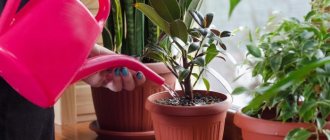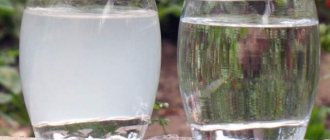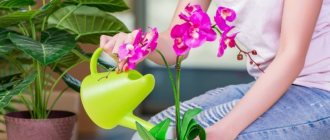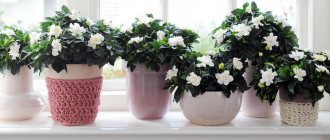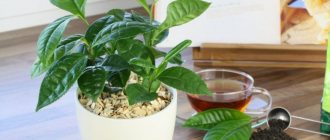The frequency and nature of watering indoor flowers largely determines how quickly they will grow, how luxuriantly they will bloom, as well as the degree of their susceptibility to certain diseases. Another “point” is the dependence of the amount of watering on the season.
It is unlikely that the information that watering houseplants in the warm season is fundamentally different from watering in winter can be called a secret. However, in order to provide your flowers with the liquid they need, more specific information is required.
How often to water indoor flowers in spring
Spring is traditionally considered the right time to replant houseplants. And since this is also the time of the beginning of the growing season, growing and developing flowers simply need a sufficient volume of liquid.
It is difficult to name the specific time interval that needs to be maintained between waterings. In spring, during the period of growth and development, the optimal frequency of watering ranges from 3-7 days, depending on the air temperature outside the window and in the room with flowers, the presence of heating, the degree of air humidity and its circulation.
The main sign that your plants are not getting enough water is dry soil that can be easily pierced with a wooden stick. If the stick easily went several centimeters deep and after removing it you found that it was dry, you can safely water the plant. But this check must be performed very carefully so as not to damage the root of the plant.
Once or twice a month, watering the plants is combined with root feeding. Manufacturers of mineral fertilizers recommend dissolving them in water and applying them at the root once every two weeks in the warm season. In this case, fertilizing should alternate with treatment against diseases and pests, which is also carried out once every two weeks, and it can be both root and foliar. For better growth in the spring, all plants, including domestic ones, require fertilizing with nitrogen fertilizers, and from folk remedies - thick infusions of eggshells or onion peels.
And a little about spraying. This is also a kind of watering, however, some flowers (especially during the flowering period) suffer from liquid getting on the leaves (plants of the Solanaceae family, in particular petunia), and especially from stagnation of water in their axils. In this case, you need to spray not the plants themselves, but the air within a radius of several meters from them.
- Why indoor plants don't bloom and how to fix it
What is the reason that your home flowers have ceased to please you with buds?
The frequency of spraying indoor plants with water without adding other means is also directly dependent on the air humidity in the room. If the heating has not yet been turned off, and it is already warm outside, then you need to spray indoor plants at least twice a week and water the same number of times. This is especially important if your flowers are on a windowsill under which there is a heating device. If the situation is diametrically opposite, then watering and spraying of plants should be increased very carefully, focusing on the condition of the soil (dry or wet) and leaves (if they begin to droop, it’s definitely time to water the plant).
As soon as the average daily air temperature outside the window rises to 10-15°C, some flowers can be safely placed on the balcony (provided that it is glazed). These include, in particular, Ficus Benjamin, Aspidistra, Boxwood, Crassula, Aloe, Kalanchoe, Begonia, Primrose, Hydrangea, Hibiscus, Monstera and Azalea.
- What flowers to plant on the balcony - a list of names with photo ideas
How to place flowers on the balcony: design, suitable types, care tips.
Plants that are afraid of cold air and drafts (orchid, spathiphyllum, anthurium) are better left in the room even in the summer, but they will have to be additionally sprayed. For temporary balcony pets, before the sun begins to shine brightly, it is enough to water and spray them once a week.
Water quality
In general, ordinary tap water is suitable for watering indoor plants. However, the main thing is that it is not tough. The fact is that water contains salts, which after frequent watering will accumulate in the soil, which is very undesirable for a growing crop. According to experienced gardeners, indoor plants can be watered with chlorinated water, which is considered safe. Be that as it may, if you have the opportunity, it is better to water with water that has passed through the filtration system.
Often beginners do not know what temperature the water should be for irrigation. Experts advise watering with water at room temperature and avoiding extremes. If you water a plant with warm or cold liquid, you will most likely harm it.
Octopus ancestors may be 30 million years older, fossils suggest
Prayers that summer residents like. Words that help you get a harvest
The main thing in our lives: Valery Meladze about his children and the imminent addition to the family
How often to water indoor flowers in summer
In this case, where exactly your plants are located is also important. If this is any window in the apartment except the south one, and the heating, of course, is already turned off, then the interval of one week between waterings is maintained, but you can spray the flowers more often. Balcony pets are a different story. They, like the plants on the south window, firstly, need to be protected from direct rays of the sun, shading with tall sun-loving plants (ficus, croton, dieffenbachia, some types of palm trees), and secondly, periodically check the soil moisture and water accordingly (about 2-3 times a week). But you can spray flowers on the balcony in hot weather at least every day, but do it exclusively in the early morning or in the evening, when the sun is not active. Let us remind you that you should not spray the leaves of plants during their flowering: there is a risk that the buds will curl and fall off.
By the way, lovers of indoor flowers claim that plants that love the sun mainly have dense, thick leaves.
In order not to make mistakes with watering, it is better to plant the plants in pots with drainage holes and trays, where you pour water. In this case, the flower will drink as much water as it needs, and all the excess will remain in the pan.
Fertilizing flowers should be continued in the spring, but to improve the effect, carefully study the instructions included with a particular fertilizer complex. As for treatment with drugs against pests, one or two such events over the summer will be quite enough for plants, plus two or three treatments with green soap.
- What to do with indoor flowers in summer
Indoor flowers in summer need special attention and care. Let's figure out why.
What to water with
Experienced gardeners recommend watering with a watering can.
If you use a glass or jug for this purpose, then, most likely, the water will simply overflow over the edges of the container onto the floor, onto the windowsill, or stain the table. Thanks to the long spout of the watering can, spills will be completely eliminated as the water will be directed directly to the base of the flower.
More than just turning off the lights: how you can support the Earth Hour project
Total dictation 2021 can be written in English
Who lived the best under the USSR? What did Soviet residents envy when they arrived in Georgia?
This watering can can also be recommended for watering plants located high above your head.
How often to water indoor flowers in the fall
There is a fairly well-known rule that from May to September, house flowers are watered much more abundantly than during the rest of the year. This means that in the fall, watering and spraying of plants is gradually reduced, focusing on the temperature and humidity of the air, as well as the condition of the soil.
There are some other ways to determine soil moisture. For example, you can take a small handful of earth and knead it in your hands. If it breaks up into small particles, then the soil is dry and it’s time to water the plant. Another way is to tap the bottom of the pot. If the soil is dry, the sound will be louder than when tapping on a pot with wet soil. You can also check the soil using a moisture indicator, which, however, if there is a large amount of mineral salts in the soil, can be wrong.
Indoor flowers kept in ceramic dishes require much more moisture than others.
- What to do with indoor plants in the fall
A few important points to keep in mind.
If in the spring plants need nitrogen fertilizers for growth, then in the second half of summer and early autumn they need phosphorus-potassium fertilizers - to strengthen the root system, resistance to temperature changes and various diseases. Therefore, combine watering with fertilizing, following the instructions for a particular fertilizer.
Watering methods
There are several methods by which you can water flowers in the summer. The most important thing is that hydration must be carried out in two mandatory stages:
- irrigation of the top layer of soil;
- abundant wetting of the soil, which will allow moisture to enter the deeper layers of the soil and stay there for some time.
Accordingly, watering flowers in summer can be done in two ways:
- Sprinkling.
- From a hose.
The method of sprinkling or moistening flowers from a watering can is the most optimal for all flower crops. The effect of such irrigation is similar to natural precipitation, and accordingly, plants respond well to it. During sprinkling, water enters the soil in doses and moderation, moisturizes the root system, protects leaves from dust, reduces soil erosion and improves aeration. Watering with a watering can additionally provides high-quality air humidification in the flower garden, which is very important in dry weather.
Watering with a hose is not the most convenient option for moistening a flower garden, but it is quite acceptable if done correctly. It is better to use rain water or from a pond. Well water requires a certain amount of time to settle; prolonged moistening with such liquid can lead to excessive salinization of the soil. Moistening with water from a hose should be done with a weak stream directly along the top of the plants, and not from the sides, as most novice gardeners mistakenly do.
An important point is to use only heated water. Watering with cold water leads to hypothermia of the root system, rot and even death of flowers. It is optimal to soak the water for 24 hours.
How often to water indoor flowers in winter
Some flower growers claim that in winter plants can hardly be watered or fed. This is fundamentally wrong, since even in the cold season, your pets can get sick, be attacked by pests, or even die from lack of moisture. There are those who prefer to bloom in winter (phalaenopsis, spathiphyllum, hippeastrum, Schlumbergera), which means that the period of active growing season falls precisely at this time, or does not stop at all. For this reason, caring for such a plant should correspond exclusively to the period of its growth or rest.
All other plants should be watered inactively as the soil dries. It is not recommended to use self-watering systems, or to moisten plants through trays, as in the warm season: this winter can contribute to the appearance of mold on the soil and the occurrence of diseases in the plant. Fertilizing plants, as well as treating them against pests, is carried out no more than once every month and a half.
- Helping indoor plants survive the winter - 5 important points you might have forgotten
Some indoor plants fall asleep in winter, while others, on the contrary, are preparing to bloom. And everyone needs special care!
Do you have mandatory rules regarding watering indoor flowers throughout the year, and what tricks do you know on this topic?
What water should I use for irrigation?
Both cut flowers and potted plants should be watered with softened water. To soften hard water, you can boil it, but then it will not contain the minerals the plant needs to thrive. You can also soften water using:
- wood ash - added at the rate of 3 g/1 liter;
- fresh peat – 100 g/10 liters;
- drugs used by aquarists;
- household filter.
Some plants (azaleas, rhododendrons, cyclamens, hydrangeas) prefer acidified water. To acidify the liquid, you can add lemon juice (a couple of drops per liter of water) or citric acid (on the tip of a knife). It is recommended to acidify water for irrigation every once in a while. The water temperature should not be lower than room temperature. You can water the plants with slightly warm water at a comfortable temperature for your hand. Heat stimulates the growth of the root system. Cold water is poorly tolerated by all plants except cyclamens and cymbidiums.
What else do you need to know
It may be that your indoor flowers will grow noticeably weaker than before. This sign indicates that it is time to reduce the volume of fluid. After this, observe the plant and, if growth resumes, return to the previous volume. According to experts, it is mostly beginners who water indoor crops too often and too much. As a result, the root system is affected by rot and various fungal diseases.
The disease can be judged by drooping stems, wilted leaves and a whitish coating. In addition, fungus gnats and other pests appear in the pot, the ideal breeding ground for which is constantly moist soil.
These signs indicate an urgent need to reduce the amount of water and water less frequently. If the leaves of domestic flowers dry out and begin to fall off, the edges become crunchy or have acquired a brownish tint, it means that the crop is suffering due to lack of water. Soil moisture is determined using a special meter.
It is stuck into the ground to a certain depth.
For those who are away from home for a long time and cannot water, experts recommend using a very effective method, which is also called a “wick”. One end of the strip of material is placed in a pot, and the other in a container with water. As a result, the land will never dry out.
Found a violation? Report content
Spathiphyllum
armifello / Shutterstock
Spathiphyllum blooms in spring or summer. Its flowers are a bit like calla lilies, but it requires much less attention.
How to care
Light or shadow . Spathiphyllum loves light, but not direct sunlight. So window sills and balconies are prohibited, but the space next to the windows can be safely used. If you don’t want to see it bloom, you can put the spathiphyllum in the shade: it won’t get sick or die, just the leaves will turn dark green and the buds won’t appear.
Water . In the warm season, spathiphyllum needs to be watered abundantly, but only once every two to three days. In cold weather - less often. If dark spots appear on the foliage, it means you overdid it with watering. It is advisable to periodically spray the spathiphyllum with water from a spray bottle.
Transplant . It is enough to do it once every two to three years, but you should always choose a larger pot so that the overgrown roots feel comfortable.
What else do you need to know . Do not leave spathiphyllum in a room with a temperature below 10 degrees and do not create a draft: the plant will “get cold” and will rot.
When should you water your flowers in the morning or evening?
In summer it is better to water in the evening, and in winter - in the morning. Do not allow the soil to dry out or over-water. When the soil is very dry, when watering, the water is not absorbed, but flows down the walls of the pot and flows out. In winter, the air in the apartment is usually dry.
Interesting materials:
Is it possible to keep ficus benjamina in the bedroom? Is it possible to keep a flower of female happiness in the bedroom? Is it possible to open an account with Sberbank remotely? Can you add coconut cream to coffee? Is it possible to add milk to soap? Is it possible to drive through a yellow traffic light? Is the elastic bandage machine washable? Is it possible to eat barberry fruits? Is it possible to eat raw vegetables at night? Is it possible to drive with the clutch without gas?
What time of day to water home flowers?
Gardeners have differing opinions on this issue. Some insist on watering in the morning at the first rays of the sun, since sunlight enhances chemical reactions in the leaves. Once saturated with moisture, the plant actively grows and absorbs nutrients from the soil well. The morning moisture evaporates during the day, moderately nourishing the root system. At night, processes in flowers slow down, moisture takes longer to be absorbed, and the likelihood of damp soil arises - a beneficial environment for the emergence and development of fungal diseases.
Note! Morning watering is especially important in winter, when the flower, being at rest, has time to absorb moisture during the short daylight hours. When watering in the morning, it is important to ensure that water does not fall on the leaves, which, when evaporated, can cause the plant to burn.
Other gardeners are confident that the earthen ball retains moisture longer when watered in the evening. In summer, water quickly evaporates from the soil without having time to nourish the root system. In addition, after sunset it is possible to irrigate without the risk of getting burned. It is recommended to fertilize with liquid fertilizers in the evening; during the night the plant will have time to be saturated with minerals.

